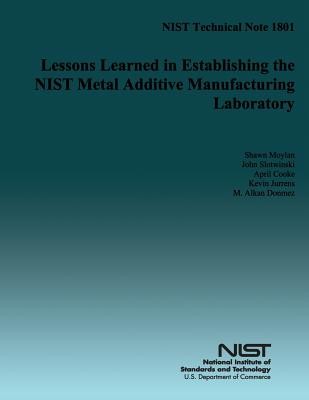
- We will send in 10–14 business days.
- Author: U S Department of Commerce
- Publisher: CreateSpace Independent Publishing Platform
- Year: 2014
- Pages: 42
- ISBN-10: 1499526970
- ISBN-13: 9781499526974
- Format: 21.6 x 28 x 0.2 cm, softcover
- Language: English
- SAVE -10% with code: EXTRA
Reviews
Description
Additive manufacturing (AM) - also known as direct manufacturing, freeform fabrication, layered manufacturing, and three-dimensional (3D) printing - is defined as the process of joining materials to make objects from 3D model data, usually layer upon layer, as opposed to subtractive manufacturing methodologies such as machining [1]. AM has matured from initial applications in rapid prototyping, where the resulting part was used for form, fit, and/or functional testing, to the making of functional components. AM processes demonstrate significant potential for a revolutionary, rapid, art-to-part capability for making high-value, complex, and individually-customized parts. Additive processes promise the ability to manufacture parts that are difficult or impossible to make with conventional manufacturing techniques, including parts with complex geometries, internal features, engineered porosity, or lattice structures. Companies from a wide variety of industries currently use AM for product development and fabrication, ranging from aerospace parts to biomedical implants to consumer products to maintenance and repair of legacy systems. Broader adoption of AM processes by U.S. manufacturers, however, is currently hindered by deficiencies in part accuracy, surface finish, available materials and material properties, process speed, part size, and standards.
EXTRA 10 % discount with code: EXTRA
The promotion ends in 20d.03:02:02
The discount code is valid when purchasing from 10 €. Discounts do not stack.
- Author: U S Department of Commerce
- Publisher: CreateSpace Independent Publishing Platform
- Year: 2014
- Pages: 42
- ISBN-10: 1499526970
- ISBN-13: 9781499526974
- Format: 21.6 x 28 x 0.2 cm, softcover
- Language: English English
Additive manufacturing (AM) - also known as direct manufacturing, freeform fabrication, layered manufacturing, and three-dimensional (3D) printing - is defined as the process of joining materials to make objects from 3D model data, usually layer upon layer, as opposed to subtractive manufacturing methodologies such as machining [1]. AM has matured from initial applications in rapid prototyping, where the resulting part was used for form, fit, and/or functional testing, to the making of functional components. AM processes demonstrate significant potential for a revolutionary, rapid, art-to-part capability for making high-value, complex, and individually-customized parts. Additive processes promise the ability to manufacture parts that are difficult or impossible to make with conventional manufacturing techniques, including parts with complex geometries, internal features, engineered porosity, or lattice structures. Companies from a wide variety of industries currently use AM for product development and fabrication, ranging from aerospace parts to biomedical implants to consumer products to maintenance and repair of legacy systems. Broader adoption of AM processes by U.S. manufacturers, however, is currently hindered by deficiencies in part accuracy, surface finish, available materials and material properties, process speed, part size, and standards.


Reviews